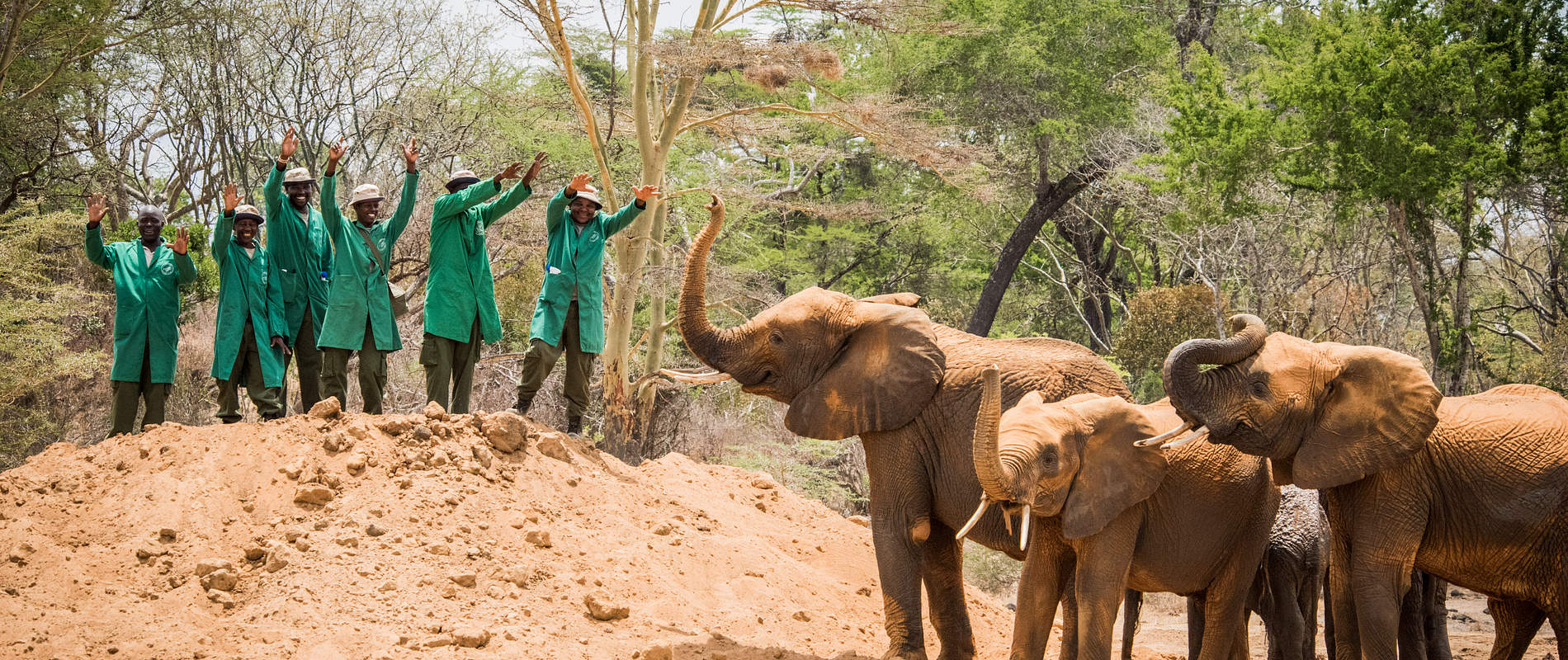All of Kenya’s wild spaces hold their own magic, but the Kibwezi Forest is a true gem. Like a spectacular emerald, it sits nestled between the rolling foothills of the Chyulu Hills with the vast plains of the Amboseli ecosystem beyond, and Tsavo stretching east. As one of Kenya’s last remaining groundwater forests, this habitat is lush much of the year thanks to the Umani Springs. This network of springs percolates through the forest floor, serving as a precious life force for all manner of creatures. Among the Kibwezi Forest’s residents are 14 very special orphaned elephants — individuals who have overcome the most tragic, formidable circumstances to be here today.

The Chyulu Hills
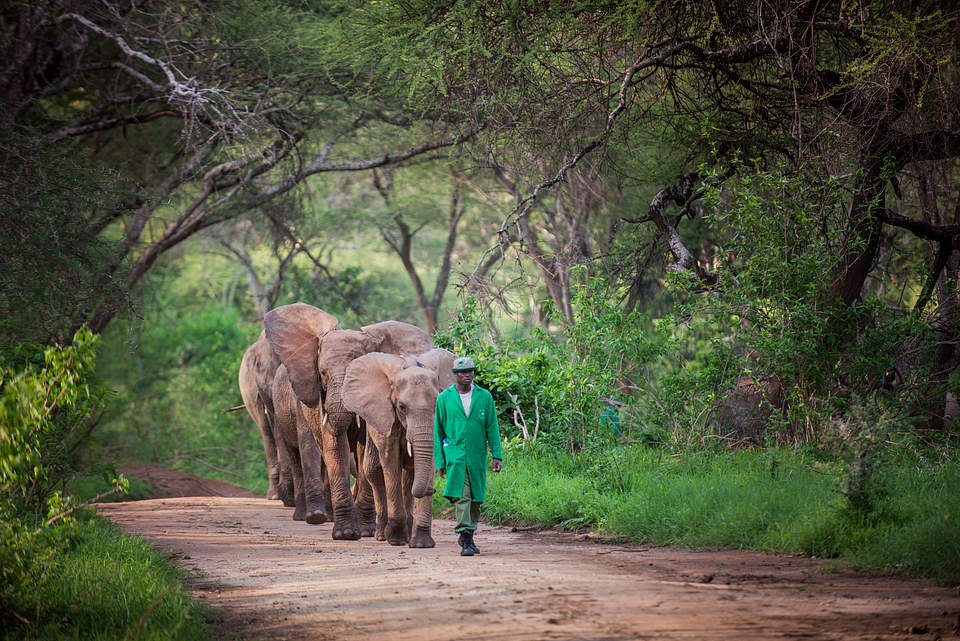
Helping orphaned elephants reclaim their place in the wild
These elephants only add to the magic of the Kibwezi Forest. It is for them that we created the Umani Springs Reintegration Unit, our third site dedicated to helping orphaned elephants reclaim their place in the wild. As our smallest herd, currently consisting of just 14 elephants — many of whom are physically compromised — the pace here is a bit more sedate.

Umani mornings

Breakfast for the milk dependent orphans
As the sun peeks through the branches of the Kibwezi Forest, creating a patchwork of light and shadows through the foliage, the orphaned elephants begin to stir. The “nightclubbers” — the Keepers’ nickname for the orphans who are beginning to explore their independence — are loitering by the gate, eager to meet their friends. They are joined by the dependent orphans, who have had their fill of milk and are ready to get moving. The whole group convenes outside the stockades to munch on lucerne. Murera and Sonje, who are the matriarchs of the herd and both have lifelong mobility issues, take this opportunity to do some elephant yoga and limber up for the day.
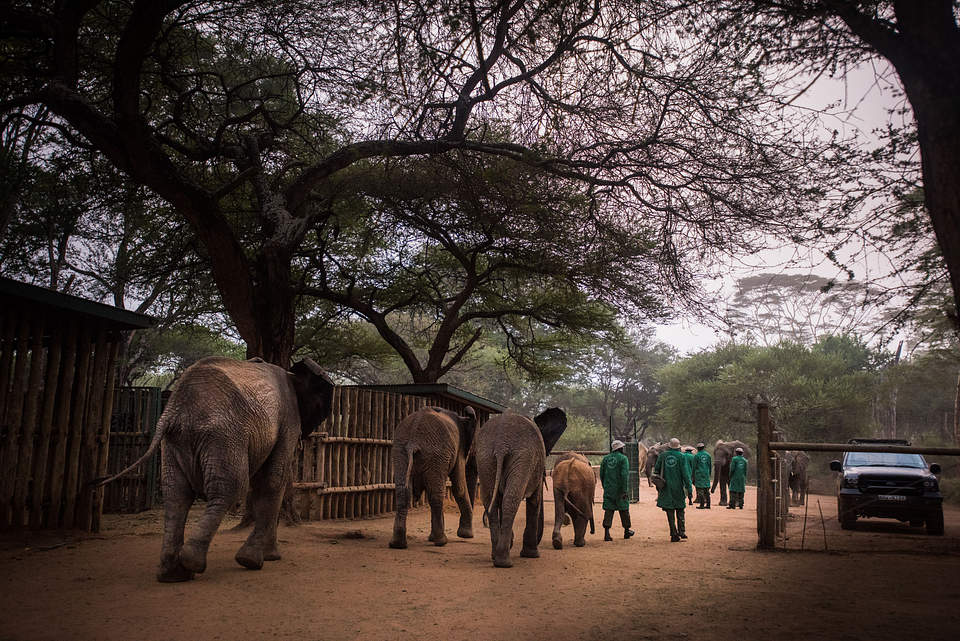
Beginning their day
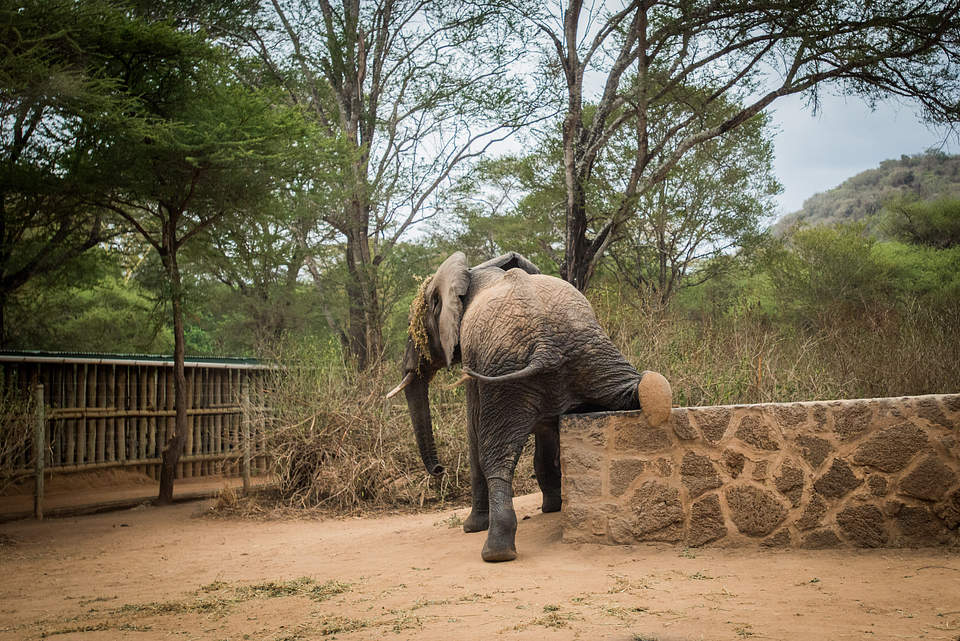
Yoga stretches
While the orphans mill around outside, the Keepers work like a well-oiled machine to turn over the compound. Some clean out all the stockades — suffice it to say, elephants do not keep tidy bedrooms — as others top up the lucerne stocks or prepare for the next milk feeding. After about an hour, the whole place is spick and span. This coincides perfectly with the orphans’ schedule; at this time, they are just starting to get restless, and the whole group heads out into the Kibwezi Forest.

Cleaning up from the night before

The compound is made shipshape before the day begins
Wildlife is abundant in the Kibwezi Forest. Because of the nightclubbers’ evening forays, the whole herd’s social circle is expanding with lots of wild friends. The bulls of the Kibwezi Forest have taken a shine to the older girls, particularly Sonje, and a constant stream of hopeful suitors stream through. Elephants aside, the orphans encounter many wild animals throughout the day, providing endless excitement and entertainment. Butterflies flutter through the trees, baby terrapins slide into the springs, and bushbucks scurry across the path. Lima Lima, the self-appointed bodyguard of the Keepers, is very attuned to all these creatures and always raises the alarm when an interloper is in their orbit.
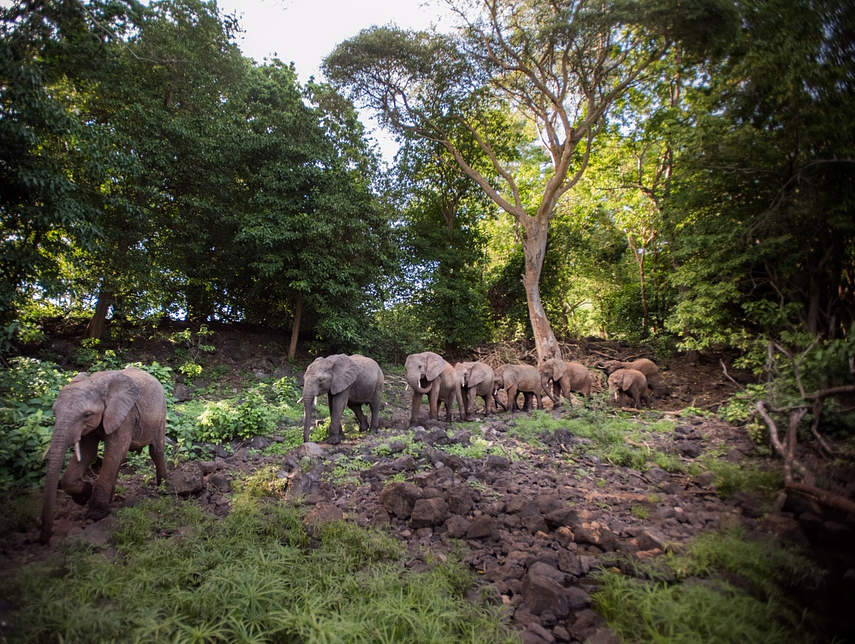
The orphans heading out for the day deep into the forest

Umani is known for it's beautiful butterflies, some endemic to the forest
The forest may be a hive of activity, but so is our Umani Springs Headquarters. It takes a lot of people, with various specialities, to run our ambitious conservation projects in the Kibwezi Forest. In the canteen, tea and chapatis are prepared to feed the many team members who filter through. Next door, in the tree nursery, gardeners tend to thousands of indigenous saplings. Twice a year, we carry out community tree plantings in areas that have suffered from deforestation. In time, these little saplings will be the next pillars of the Kibwezi Forest. This area is a favourite haunt of Joi, our very shy orphaned bushbuck. She darts between the rows of plants and cheekily steals a snack when she can get away with it!

Breakfast for the team

Joi in the indigenous tree nursery
The Kibwezi Forest is a cornerstone of our Saving Habitats initiative. When we secured our concession here with the Kenya Forest Service back in 2008, it had been completely ravaged by bushmeat poaching, illegal logging, charcoal harvesting, and livestock incursions. Now, working with local communities, it is a model of conservation success. However, it takes a concerted effort to keep it this way. Every day, teams patrol the forest as well as the fencelines that surround Kibwezi Forest on three sides, with the fourth open to the Chyulu National Park. The electric fences create a vital border between wildlife within and the families who live alongside the forest. Our Anti-Poaching Units also conduct daily patrols throughout the forest, identifying signs of illegal activity and ensuring that the area remains truly wild.
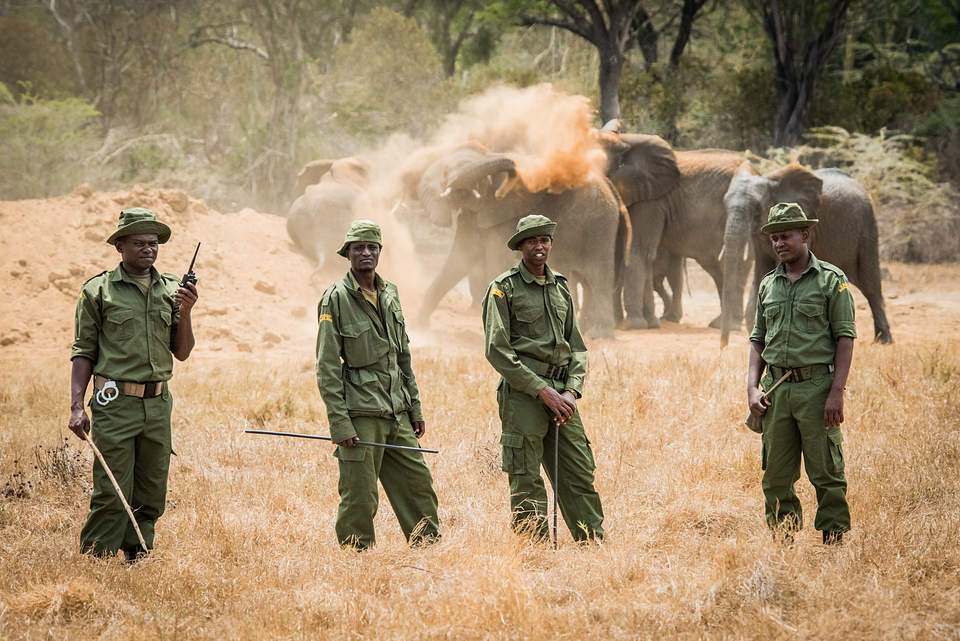
Three SWT teams help keep the forest and the Chyulu Hills ecosystem free from illegal activities
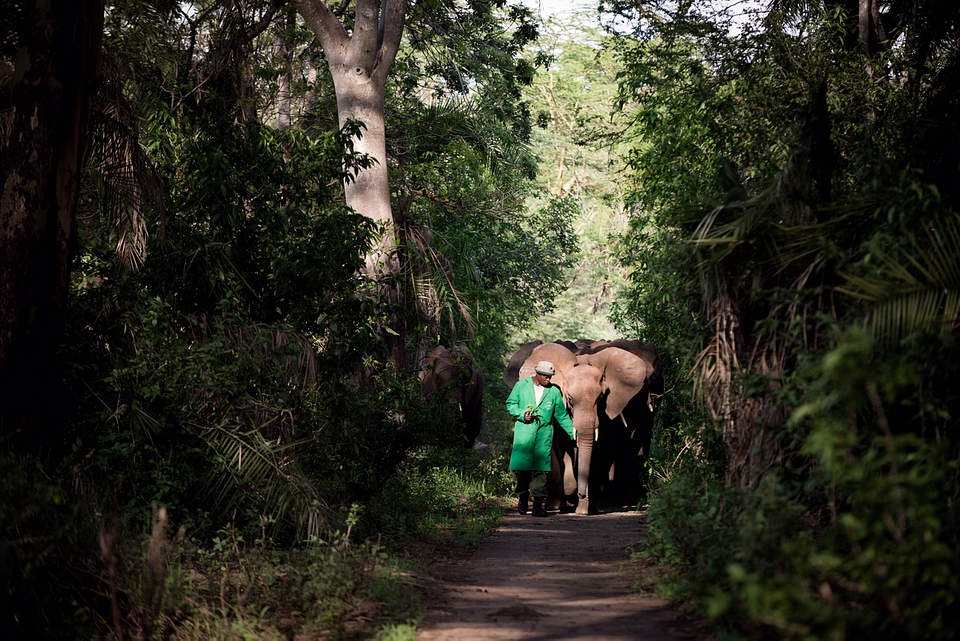
Walking through the palm forests of Kibwezi
Over at Umani Springs Lodge, the host team makes sure everything is shipshape. Tourists who stay in this remarkable camp have a front row seat to the magic of the Kibwezi Forest, while also directly supporting its protection. It is a seamless part of its natural surroundings: Forest antelope graze sedately on the lawn while vervet monkeys scamper around with their babies clamped to their bellies. A crocodile suns itself on the edge of the pond, surrounded by terrapins and bullfrogs. Word is clearly out among resident wildlife that Umani Springs is a safe haven.

Bushbuck graze the lodge lawns

Numerous waterholes throughout the forest provide entertainment for the elephants
While lunch is prepared by our resident chef, guests can walk down to the mud bath and join the orphaned elephants for their afternoon milk feed and wallow. Luggard loves this time of day; sandwiched between his mummies Murera, Sonje, and Lima Lima, he enjoys a gentle soil dusting before settling down for a nap in the sun. This is also when the Keepers enjoy some well-deserved downtime. Lunch is brought out to them, which they enjoy under the shade of a tree.
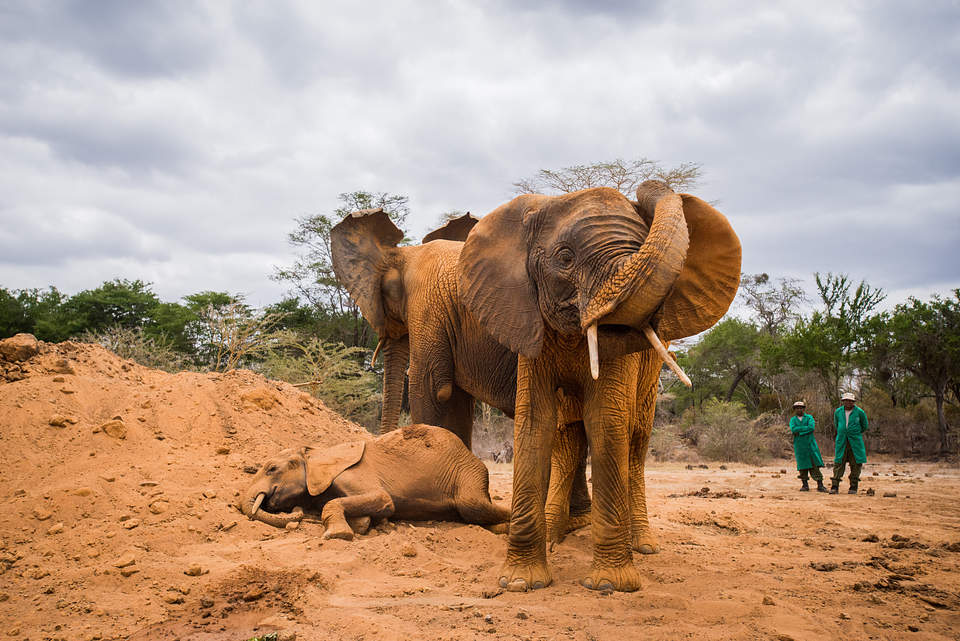
Luggard takes a rest on the dust pile
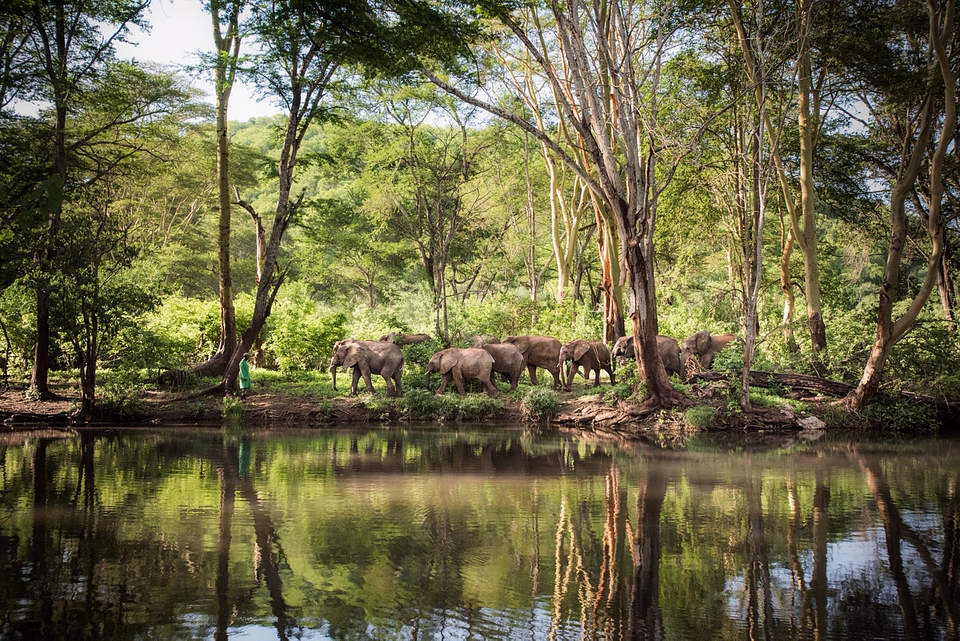
Umani Springs
The orphans spend the afternoon meandering back in the direction of home, by way of shady groves and sparkling springs. We let each orphan determine their own sleeping arrangements. If they prefer to remain out in the forest, fraternizing with wild friends, they are free to do so. Those who choose to come back to the compound enjoy sheltered stockades, which are fully stocked with freshly-cut branches to enjoy as a bedtime snack. The orphans are never left unattended; Keepers on nighttime duty stay in an elevated tent within the lion-proof compound, ready to help should they be needed. Nights are usually quiet, however, and the greatest drama might be a leopard feasting on a kill in a nearby acacia tree. The Keepers can quell the orphans’ nervous rumblings with a reassuring word, and peace soon reigns again.
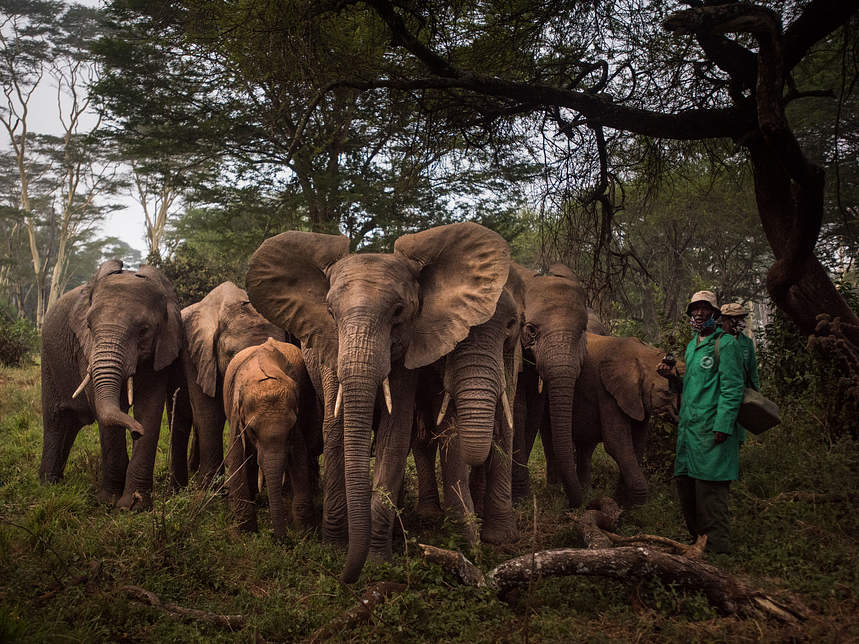
Luggard is the most compromised of all the orphans at Umani and cherished by all
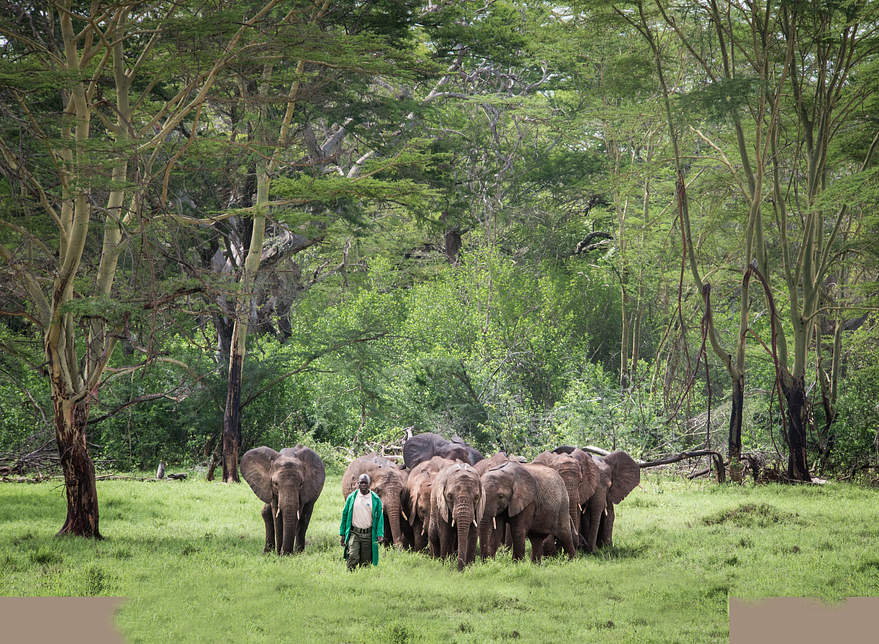
Beneath the branches of the Kibwezi Forest
The feeling of peace prevails at Umani Springs. The orphans here have fraught histories and challenging physical setbacks. For them, Umani Springs is a sanctuary, a place where they can move beyond the tragedies of their past and live as nature intended. For all of us, it is a shining example of conservation — proof that, with vision and perseverance, there is hope. Standing beneath the branches of the Kibwezi Forest, listening to the springs bubbling and wildlife rustling through the trees, one experiences this keenly. As our orphans reclaim their place in the wild, they too become part of the fabric of this remarkable corner of Kenya.
